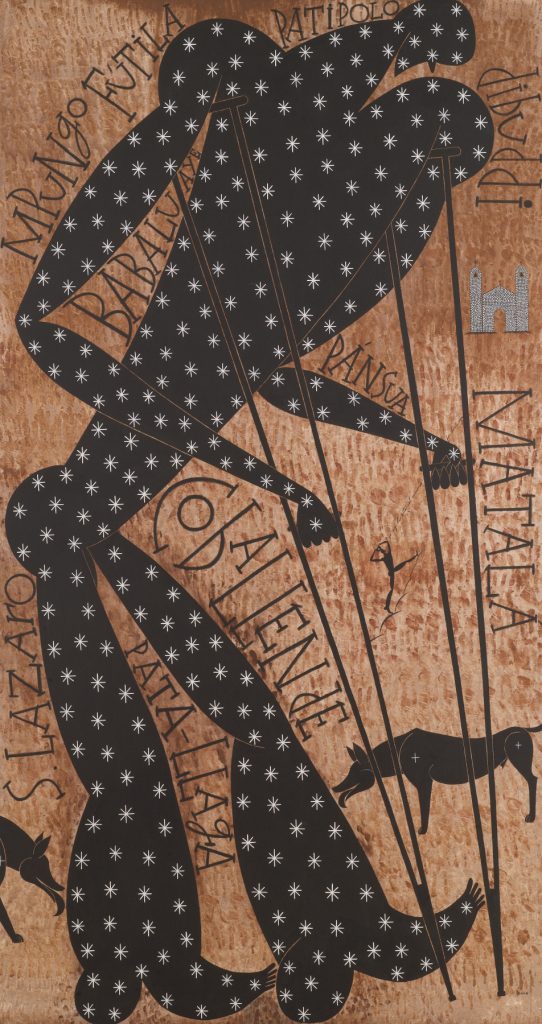San Lázaro (O Yo Soy La Ruta) (work of art)
Artwork Info
Key Ideas
- In Afro-Cuban religions, San Lázaro is the god of sickness and healing. He is often depicted with crutches and diseased skin.
- José Bedia uses iconography (images and symbols) to represent San Lázaro. These include a black silhouette dotted with white stars, a pair of crutches, San Lázaro’s various names, and a church.
- Bedia’s artwork is inspired by his religion. It is a combination of Kongo, Native American, and Catholic beliefs. Many of his works feature sacred figures from the Palo Monte religion.
Learn More
José Bedia’s art reflects his Cuban heritage and celebrates the cultures of Indigenous peoples in Latin America, Africa, and North America. Bedia explores the themes of identity and exile in his artwork, with a focus on his Palo Monte religion. Palo Monte is an Afro-Cuban religion with strong links to Native American beliefs. The practice of Palo Monte began in Cuba. It blends Catholicism, Kongo, and Native American religions and their gods, orishas, and saints. San Lázaro is a combination of the Catholic Saint Lazarus and the Orisha Babalu Aye (baba-loo eye-ay).
This painting features the different Palo names that represent San Lázaro. He is depicted as a dark figure on crutches. His body is covered in stars that represent his diseased skin, and his guide dogs are licking his wounds. San Lázaro is regarded as a humble saint of health and healing who soothes the sick, especially immigrants and people living in poverty. He is also known as the “god of crossroads” who guides people in making difficult decisions. San Lázaro’s comforting words appear in the middle of this painting, in Spanish: “Yo soy la ruta, el camino por donde vas.” The English translation of this phrase is “I am the way, the path to get you there.”
Additional Resources
Resources for Teachers:
- Explore a lesson plan in which students analyze San Lázaro (O Yo Soy La Ruta).
- Read an article about San Lazaro.
- Watch an interview with José Bedia.
Resources for Students:
- Watch a video to hear NCMA curator Linda Dougherty discuss San Lazaro and the artist’s connection to this spiritual guide.
- Watch a video about Babalu Aye/Saint Lazarus, his offerings, and feast day.
- Watch a video interview with José Bedia.

